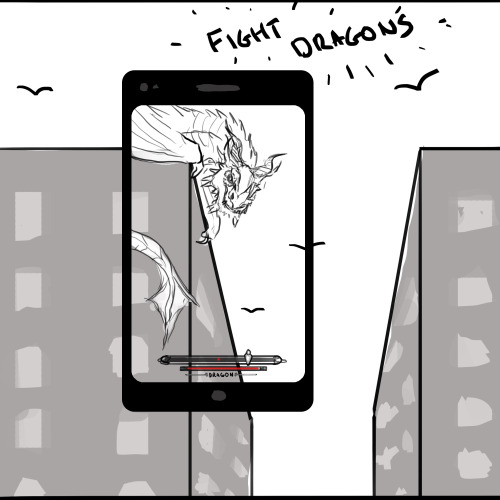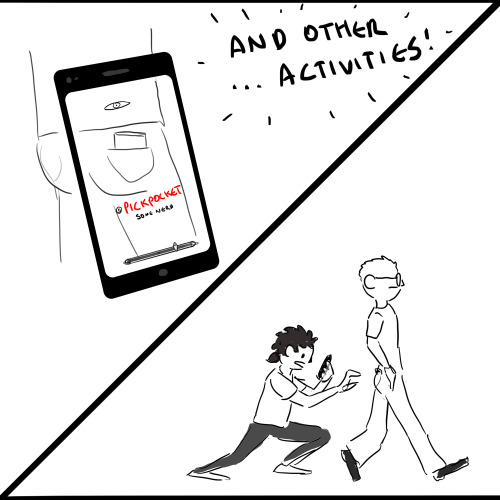There’s Only One Way To Clean The Inside Of Your Hood. Here We See Our Rotation Student, Cam, Demonstrating


There’s only one way to clean the inside of your hood. Here we see our rotation student, Cam, demonstrating the effectiveness of the technique;)
More Posts from Stubborn-turtle-blog and Others
It’s Friday...Come Space Out with Us
It’s Friday…which seems like a great excuse to take a look at some awesome images from space.
First, let’s start with our home planet: Earth.

This view of the entire sunlit side of Earth was taken from one million miles away…yes, one MILLION! Our EPIC camera on the Deep Space Climate Observatory captured this image in July 2015 and the picture was generated by combining three separate images to create a photographic-quality image.
Next, let’s venture out 4,000 light-years from Earth.

This image, taken by the Hubble Space Telescope, is not only stunning…but shows the colorful “last hurrah” of a star like our sun. This star is ending its life by casting off its outer layers of gas, which formed a cocoon around the star’s remaining core. Our sun will eventually burn out and shroud itself with stellar debris…but not for another 5 billion years.
The material expelled by the star glows with different colors depending on its composition, its density and how close it is to the hot central star. Blue samples helium; blue-green oxygen, and red nitrogen and hydrogen.
Want to see some rocks on Mars?

Here’s an image of the layered geologic past of Mars revealed in stunning detail. This color image was returned by our Curiosity Mars rover, which is currently “roving” around the Red Planet, exploring the “Murray Buttes” region.
In this region, Curiosity is investigating how and when the habitable ancient conditions known from the mission’s earlier findings evolved into conditions drier and less favorable for life.
Did you know there are people currently living and working in space?

Right now, three people from three different countries are living and working 250 miles above Earth on the International Space Station. While there, they are performing important experiments that will help us back here on Earth, and with future exploration to deep space.
This image, taken by NASA astronaut Kate Rubins shows the stunning moonrise over Earth from the perspective of the space station.
Lastly, let’s venture over to someplace REALLY hot…our sun.

The sun is the center of our solar system, and makes up 99.8% of the mass of the entire solar system…so it’s pretty huge. Since the sun is a star, it does not have a solid surface, but is a ball of gas held together by its own gravity. The temperature at the sun’s core is about 27 million degrees Fahrenheit (15 million degrees Celsius)…so HOT!
This awesome visualization appears to show the sun spinning, as if stuck on a pinwheel. It is actually the spacecraft, SDO, that did the spinning though. Engineers instructed our Solar Dynamics Observatory (SDO) to roll 360 degrees on one axis, during this seven-hour maneuver, the spacecraft took an image every 12 seconds.
This maneuver happens twice a year to help SDO’s imager instrument to take precise measurements of the solar limb (the outer edge of the sun as seen by SDO).
Thanks for spacing out with us…you may now resume your Friday.
Make sure to follow us on Tumblr for your regular dose of space: http://nasa.tumblr.com

Surgeon Al-Zahrawi (936–1013 CE) from Cordoba in the Muslim kingdom of al-Andalus, was one of the most famous physicians of the middle ages. He invented many medical instruments, and wrote the first surgical textbook which included illustrations like the one above. It was not just a textbook, however. The Kitab al-Tasrif is a 30-chapter treatise on multiple areas of medicine, including surgery, dentistry, and childbirth.
Phone becomes your weapon if spells aren’t equipped





no cheese shop would be safe
World’s Oldest Fossils Found in Greenland
Geologists recently found evidence of ancient life in Greenland which they think dates to 3.7 billion years ago. If their findings are confirmed, that would make the fossils the oldest evidence of life yet known. The great age of the fossils makes reconstructing the evolution of life from the chemicals naturally present on the early Earth more difficult. You see, the fossils are too old. It leaves little time for evolution to have occurred, and puts the process of life emerging and evolving close to a time when Earth was being bombarded by destructive asteroids.

Voskhod-the first multiple-manned mission
Although we now take for granted the long term success of the International Space Station, it wasn’t too long ago that we were totally earthbound. That changed on this day, October 12, 1964 when the Soviet Union launched the Voskhod 1 (Восхо́д), the first manned capsule to carry more than one person into space. The Voskhod program was a proof of concept program to test systems for more ambitious space exploration. The Voskhod program was notable for several firsts: the first multi-person mission to space (Cosmonauts Komarov, Yegorov and Feoktistov in the Voskhod 1) and the first space walk (Belyayev and Leonov in Voskhod 2). The Vostok and Voskhod programs provided the framework for what became the Soyuz program and ultimately the current ISS.

The Russian desire to ‘win’ the Space Race led to many dangerous compromises. The interior of the capsule (shown above) was so cramped that the cosmonauts would not have room for space suits, making the flight extremely dangerous in the event of depressurisation. To insure the engineers paid enough attention to this, head designer Sergei Korolev assigned the lead engineer to fly inside the capsule, therefore motivating him to design the safest capsule possible.

The Russian word Voskhod (Восхо́д) means sunrise and is a combination of the Russian words vos- (from vostok восток) meaning east and xodete (ходить) meaning go or rise.
The wood siding could age badly unless it's well-treated, but otherwise cool.
learning to lead
you think you’re gonna be like

but really it’s like

hey man at least I can keep my feet while I’m turning a girl o-kay
Stay safe, you guys

Live wind map of hurricane Matthew – expected to make landfall in FL late tomorrow
Proportional risk
I've begun to develop a strong fear of the weather. Lightning and wind also terrify me. When someone is afraid of flying, there are statistics which could help them understand how little a risk they are actually taking. With this statistic method in mind, is there anything I could remind myself of when I begin to become frightened, that could help relax me a bit? Thank you :)
Lightning is something that’s serious, but with most things as long as you approach it intelligently, you’ll be fine!
The National Safety Council organized a handy chart of “What are the Odds of Dying From” that has some handy statistics. There’s a lot more things that we are significantly more at risk for statistically than lightning. For instance you have a 1 in 672 chance of dying as a pedestrian in your life while a 1 in 174,426 chance of dying from lightning. Yet we don’t carry the same fear when walking as we do for lightning.

Something to consider here, we’re much more often “exposed” to being pedestrians than we are exposed to lightning, so this makes a bit of sense that the numbers are so skewed, but the point of fear still stands.
Lightning is serious business, but as I said earlier we need to approach lightning intelligently.

If you look at the an analysis of lightning deaths in the US about two thirds of incidents occurred to people engaged in outdoor activities. So basically people that are outside enjoying the day when a storm comes along, and they decide to either watch the storm from an unsafe place, or keep going with the activity. Going further into outdoor “leisure” activities, of that two thirds about 35% of those activities were water related (largely fishing, but hey, why not looks at the study yourself!).
Worth mentioning, the study also pointed out that 79% of victims were male - being okay with risky behaviours doesn’t make you cool and tough, it makes you an idiot. As the study put it:
Possible explanationsfor this finding are that males are unaware of all the dangers associated with lightning, are more likely tobe in vulnerable situations, are unwilling to be inconvenienced by the threat of lightning, are in situationsthat make it difficult to get to a safe place in a timely manner, don’t react quickly to the lightning threat, orany combination of these explanations. In short, because of their behavior, males are at a higher risk ofbeing struck and, consequently, are struck and killed by lightning more often than females.
Here’s a breakdown of activities people are doing when they die from a lightning strike:

Notice these are all things that are outside! The study stated that things that contributed to lightning fatalities were people’s unwillingness to postpone activities, not being aware of approaching storms (you’re either weatherwise, or otherwise!), being in a vulnerable location, an inability or unwillingness to get to a safe place.
So how do we be safe during a thunderstorm? Do as the NOAA says “when thunder roars, go indoors”! If you know there are going to be storms that day stay alert and take a glance at a radar map every now and then (lord knows you probably have a smart phone), and have an idea of where you’ll go when a storm is near. If you’re unable to get indoors avoid hilltops, isolated tall objects like poles or trees, spread out if you’re in a group, and try to avoid wet items and areas - these won’t make you safe, but will slightly decrease your risk. The only completely safe action is getting inside a building or vehicle.

Have a look over this page on lightning safety and these tips for more info.
So bottom line, should you have a healthy respect for lightning? Yes. Should you be terrified of lightning? No. Be smart and follow the safety tips, you’ll be alright.
Thanks for reading, and I hope this helped!

Woman who loves science over here
Science Side of Tumblr, I need your help! Ladies of the Science Side of Tumblr, I especially need your help!
I had a conversation at my non-science day job that went like this:
A friend who shall be called Diane (not her real name) comes to my desk to chat. Just one of the many topics we discuss is that her boyfriend is taking a class in wildlife biology. She has decided that she has grown tired of hearing about local wildlife and hearing him recite a plethora of scientific names.
I responded positively to this subject, and told her that I too found the subject interesting. A third person had heard our conversation. We shall call her Claire (again, not her real name). Claire immediately responded, “Girls don’t like that kind of thing.”
“Are you saying that girls don’t like science?” I asked.
“No, not normally they don’t,” she responded.
Before you all screech with anguish, bear with me for a moment. We all know that this is not true. As a man, I find this idea upsetting for countless reasons that have all been validly discussed before. To try to debate the issue is rather moot. Instead, I’d like a show of hands.
Ladies of the Science Side of Tumblr! I call you to arms! Will you rally around me in saying that women can and do indeed love science, of any variety? Gentleman of the Science Side of Tumblr who know someone who is a girl who also happens to love science, will you stand with me too? We all like and reblog the pro-women-in-science posts we see so often, let’s all stand and be counted in one place this time.
Reblog this if you are a woman who loves science. Reblog this if you are a man who knows a woman who loves science. Let us disprove her beyond all doubt!
-
 evefromthenorth liked this · 9 months ago
evefromthenorth liked this · 9 months ago -
 mar-fisher liked this · 1 year ago
mar-fisher liked this · 1 year ago -
 bookbeani liked this · 5 years ago
bookbeani liked this · 5 years ago -
 ebonytoussaint liked this · 7 years ago
ebonytoussaint liked this · 7 years ago -
 jellyfishponderer liked this · 8 years ago
jellyfishponderer liked this · 8 years ago -
 alenagabriel-blog liked this · 8 years ago
alenagabriel-blog liked this · 8 years ago -
 hello-guadiana-art reblogged this · 8 years ago
hello-guadiana-art reblogged this · 8 years ago -
 vglern liked this · 8 years ago
vglern liked this · 8 years ago -
 missmrdel liked this · 8 years ago
missmrdel liked this · 8 years ago -
 atrailofstardust reblogged this · 8 years ago
atrailofstardust reblogged this · 8 years ago -
 checzchok reblogged this · 8 years ago
checzchok reblogged this · 8 years ago -
 mylittlechemistry-blog liked this · 8 years ago
mylittlechemistry-blog liked this · 8 years ago -
 lightphotons liked this · 8 years ago
lightphotons liked this · 8 years ago -
 groovy-sheep reblogged this · 8 years ago
groovy-sheep reblogged this · 8 years ago -
 groovy-sheep liked this · 8 years ago
groovy-sheep liked this · 8 years ago -
 smparticle2 liked this · 8 years ago
smparticle2 liked this · 8 years ago -
 minouki61 liked this · 8 years ago
minouki61 liked this · 8 years ago -
 milfgilfpics liked this · 8 years ago
milfgilfpics liked this · 8 years ago -
 gotta-list-of-starbucks-lovers reblogged this · 8 years ago
gotta-list-of-starbucks-lovers reblogged this · 8 years ago -
 kiki-eng reblogged this · 8 years ago
kiki-eng reblogged this · 8 years ago -
 spoiltheprincessdotcom liked this · 8 years ago
spoiltheprincessdotcom liked this · 8 years ago -
 addictedsynapse-blog liked this · 8 years ago
addictedsynapse-blog liked this · 8 years ago -
 zeldahylian liked this · 8 years ago
zeldahylian liked this · 8 years ago -
 youtubemensch2510-blog liked this · 8 years ago
youtubemensch2510-blog liked this · 8 years ago -
 twirlgirl2197 reblogged this · 8 years ago
twirlgirl2197 reblogged this · 8 years ago -
 twirlgirl2197 liked this · 8 years ago
twirlgirl2197 liked this · 8 years ago -
 thesystemonlydreamsintotaldark liked this · 8 years ago
thesystemonlydreamsintotaldark liked this · 8 years ago -
 chattando-blog liked this · 8 years ago
chattando-blog liked this · 8 years ago -
 the-endlessquestions liked this · 8 years ago
the-endlessquestions liked this · 8 years ago -
 lovingbananadreamer-blog liked this · 8 years ago
lovingbananadreamer-blog liked this · 8 years ago -
 matthewpond liked this · 8 years ago
matthewpond liked this · 8 years ago -
 gintele-blog1 liked this · 8 years ago
gintele-blog1 liked this · 8 years ago -
 perrytree1 liked this · 8 years ago
perrytree1 liked this · 8 years ago -
 sibuyanensis liked this · 8 years ago
sibuyanensis liked this · 8 years ago -
 ava-e liked this · 8 years ago
ava-e liked this · 8 years ago -
 tulog-na reblogged this · 8 years ago
tulog-na reblogged this · 8 years ago -
 antimony-ammonites reblogged this · 8 years ago
antimony-ammonites reblogged this · 8 years ago
Gaming, Science, History, Feminism, and all other manners of geekery. Also a lot of dance
243 posts